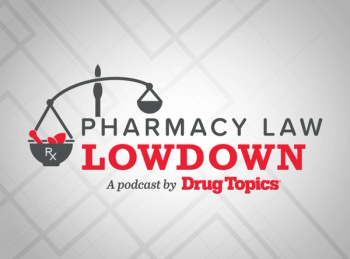
Drug Topics' 2010 pharmacists salary survey
In a down economy where many people are out of work, out of benefits, and out of luck, pharmacists can be thankful that their profession generally offers good compensation and benefits, job security, and respect.
Key Points
In a down economy in which many people are out of work, out of benefits, and out of luck, pharmacists can be thankful that their profession generally offers good compensation and benefits, job security, and respect. Although the road to becoming a pharmacist isn't easy, the destination is financially rewarding.
Drug Topics' 2010 salary survey drew 1,619 responses from across the country. They paint a picture of a stable and well-paying field with an average salary of $115,455 and personnel boasting an average of 21.6 years of experience. The hours, in general, aren't grueling, with respondents working an average of 41.5 hours per week.
The most common title among survey respondents was staff pharmacist (42.3%), followed by pharmacy department manager (15.3%), and clinical pharmacist (11.8%). A significant majority (85.4%) are employed full-time; 11.2% are employed part-time. Others generally work on contracts or as temporary employees. Only six respondents said they were not currently employed.
Among respondents who receive a salary, the majority (62.5%) report salaries falling between $101,000 and $130,000 per year, with an average of $115,455. Only about 5% of the respondents reported earning less than $80,000 annually.
About 7% of the respondents said they are the only pharmacist in their pharmacy. Twenty-two percent said there are two pharmacists in their pharmacy, and 17% said there are three. Large regional and hospital pharmacy groups represented in the survey boost the average number of pharmacists per pharmacy to 15. Similarly, the number of pharmacy technicians varies widely, with 37.7% of the respondents reporting three technicians or fewer, 22.5% reporting six to 10 technicians, and 14.4% reporting 21 or more.
Despite the differences in pharmacy size, uniformity ruled when it came to salaries. More than half (51.3%) of the respondents said their salaries were average compared to those of other pharmacists in similar practice settings in their regions; 11.4% said their salaries were higher than average, 18.2% said they were lower than average, and 18.3% didn't know. Likewise, 40.8% of respondents said their salaries were similar to the salaries of new hires, and while 28.4% said their salaries were higher than those of new hires, only 4.9% said they were "much higher."
The "glass ceiling" does not appear to be a major factor in the pharmacy field. Nearly three-quarters of the respondents (73.4%) said that female pharmacists are paid the same as male pharmacists in the same position at their pharmacies, while only 2.2% said that's not the case. However, 23.2% said they didn't know, indicating that salaries are not generally the subject of lunchtime conversation.
2009 bonuses
In addition to salaries, almost half (48%) of the respondents said that in 2009 they received a bonus in some form, such as commission, profit-sharing, etc. The average value of the bonuses was $5,474.
Benefits are a strong suit in the pharmacy industry, and the list is long and extensive: 92.6% of the respondents said they receive paid vacations; 89.4% receive health insurance; 81.1% receive dental insurance; and 73.8% can participate in a 401(k) plan.
In light of the specialized knowledge, good pay, and benefits, it's not surprising that people who gain entry into the pharmacy field tend to stay in it. On average, the years of experience reported in this survey were 21.6. Nearly 30% of the respondents reported 30 or more years of experience.
Newsletter
Pharmacy practice is always changing. Stay ahead of the curve with the Drug Topics newsletter and get the latest drug information, industry trends, and patient care tips.















































































































































